Epoch’s new 460 amp-hour, external communicating battery arrives and testing begins
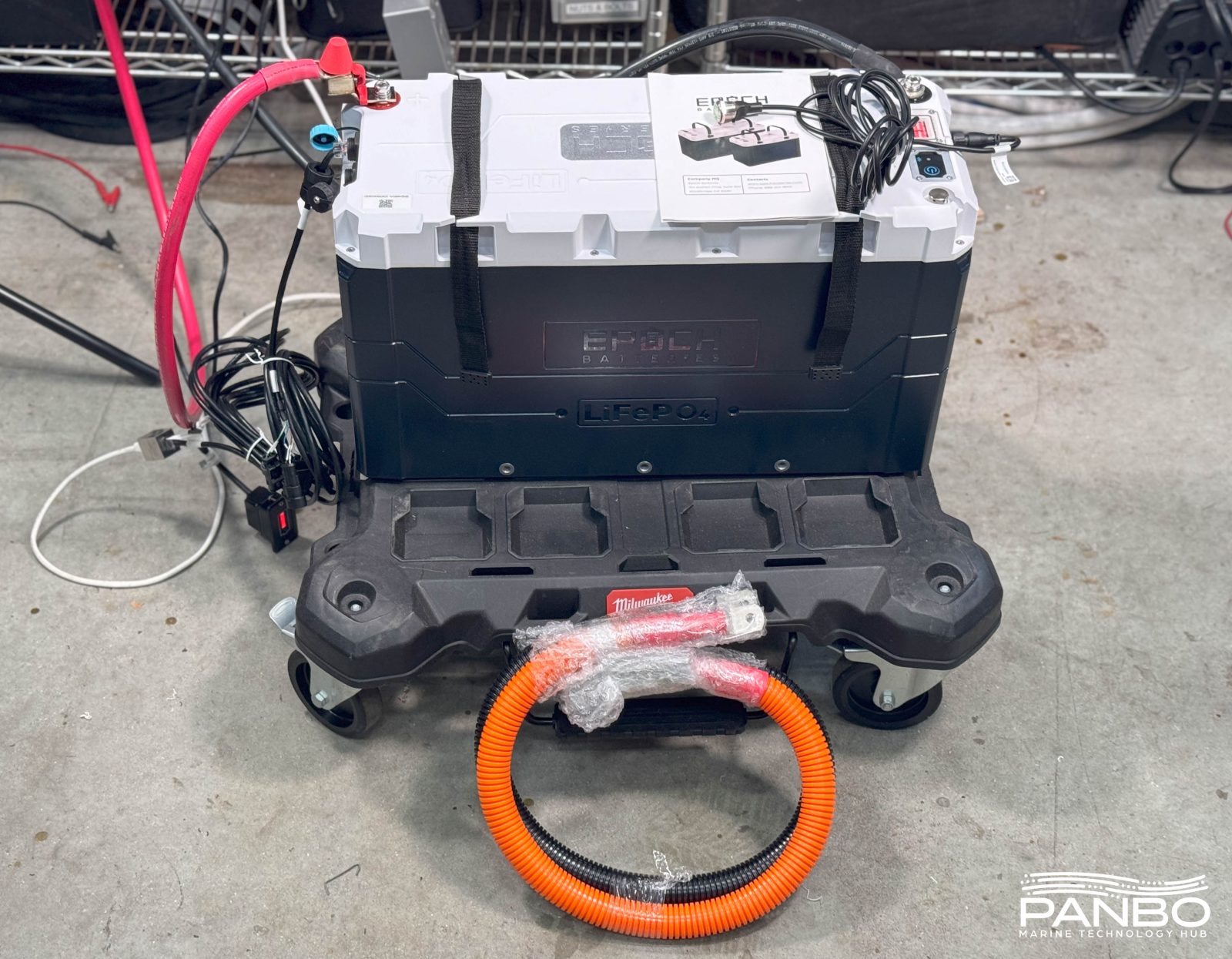
In a short time, Epoch has made a name for itself producing high-quality batteries at a remarkable value. I first tested their 100 amp-hour batteries and thought they were the best blend of value, features, and quality I have encountered. In fact, there were only two areas I thought Epoch could improve upon. First, higher density, and second, external communications. Epoch seems to have addressed both those issues and more.
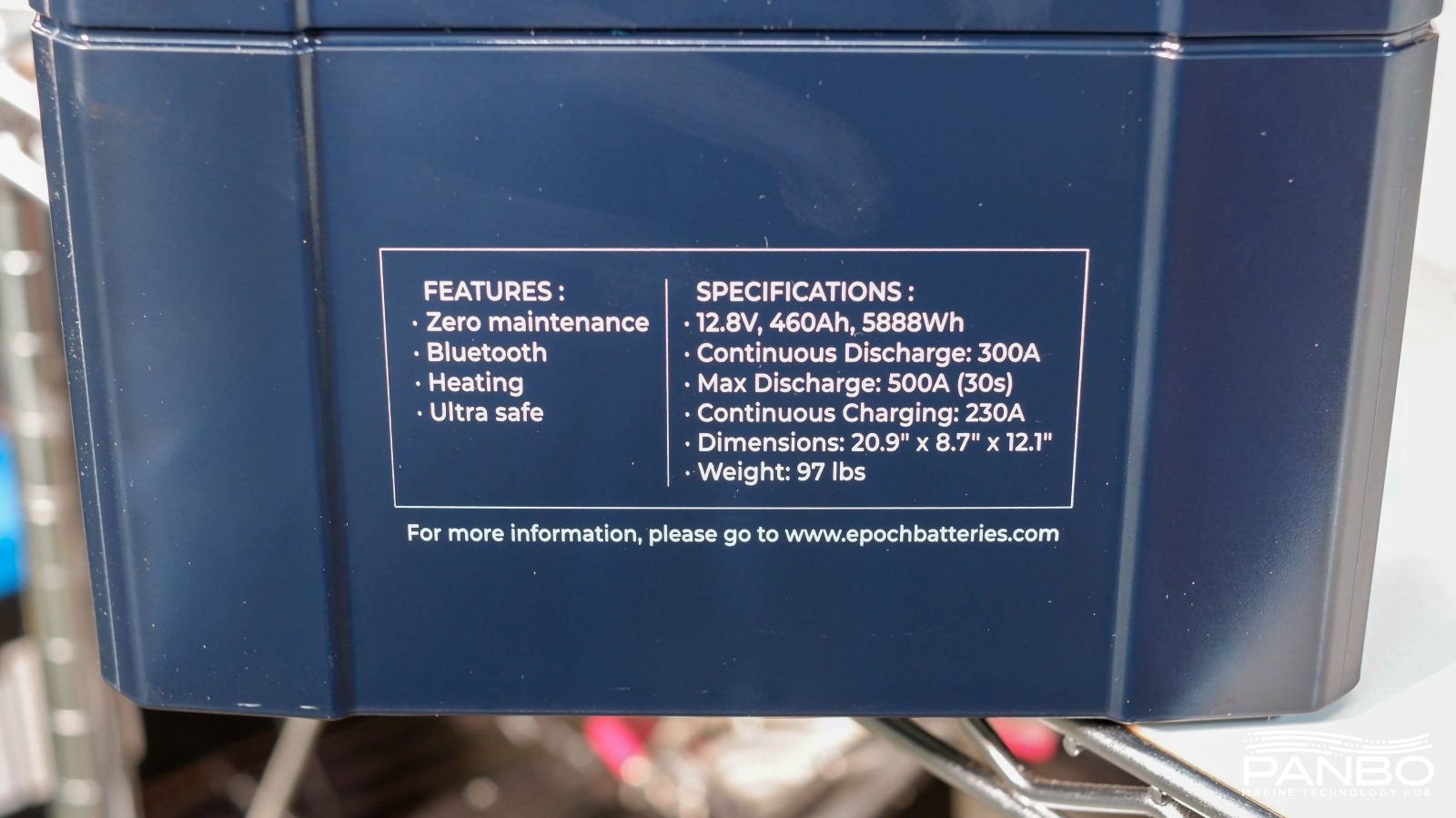
I just received my battery the end of last week so it’s early days of testing. The battery is currently charging to 100% so I can run it through a series of 20-hour capacity tests. As you can see from the specs above, this battery is a monster. Two of these in parallel will satisfy the vast majority of 12-volt house bank needs. In fact, for many applications, they may be overkill. Fortunately, Epoch has introduced a pretty complete line of 12-volt options.
My current bench test setup uses a Raspberry Pi running Venus OS and I’ve realized that setup has neither VE.CAN nor BMS CAN. So, I have a Cerbo on the way but I haven’t been able to test communication with the Venus OS and hence VRM yet.
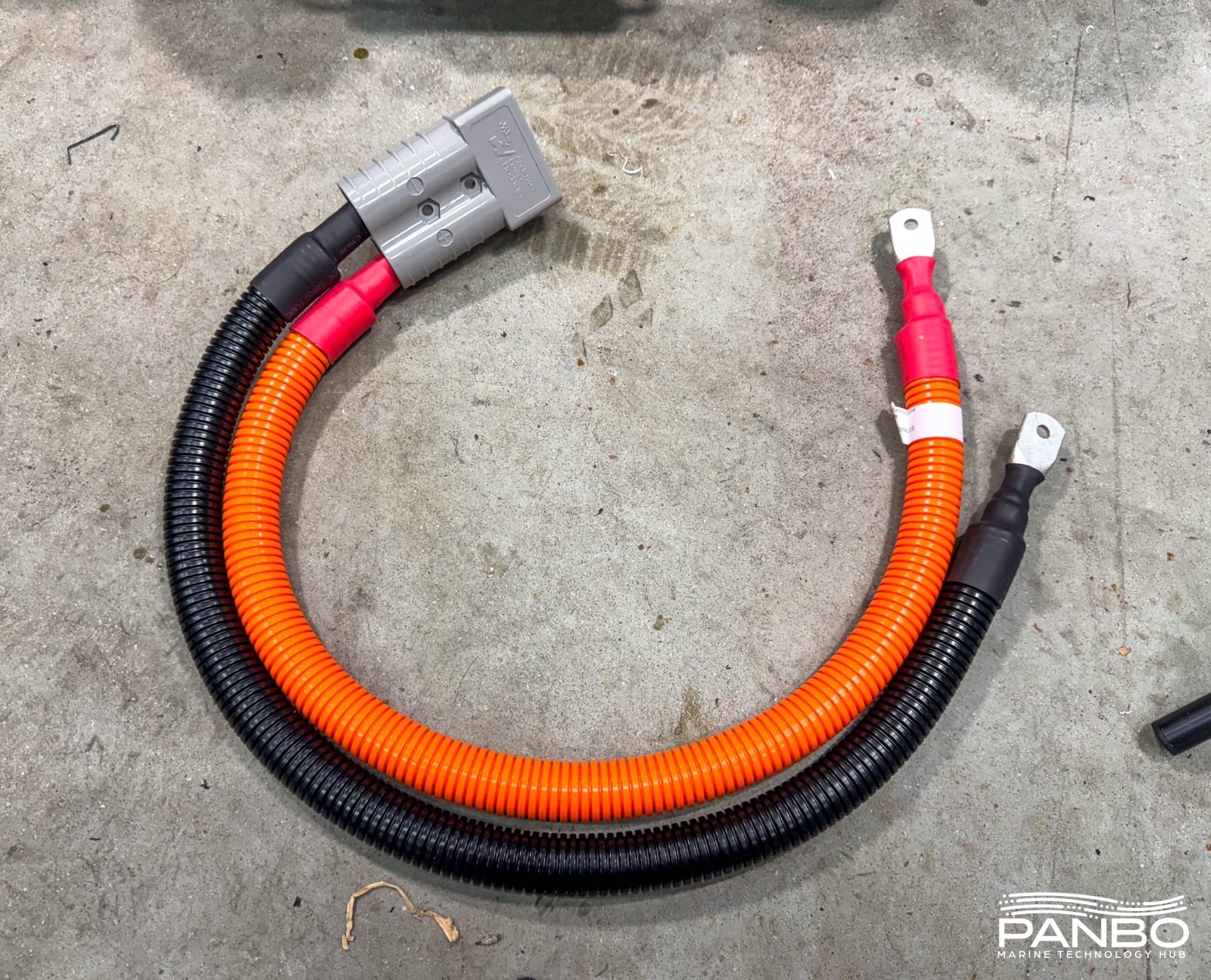
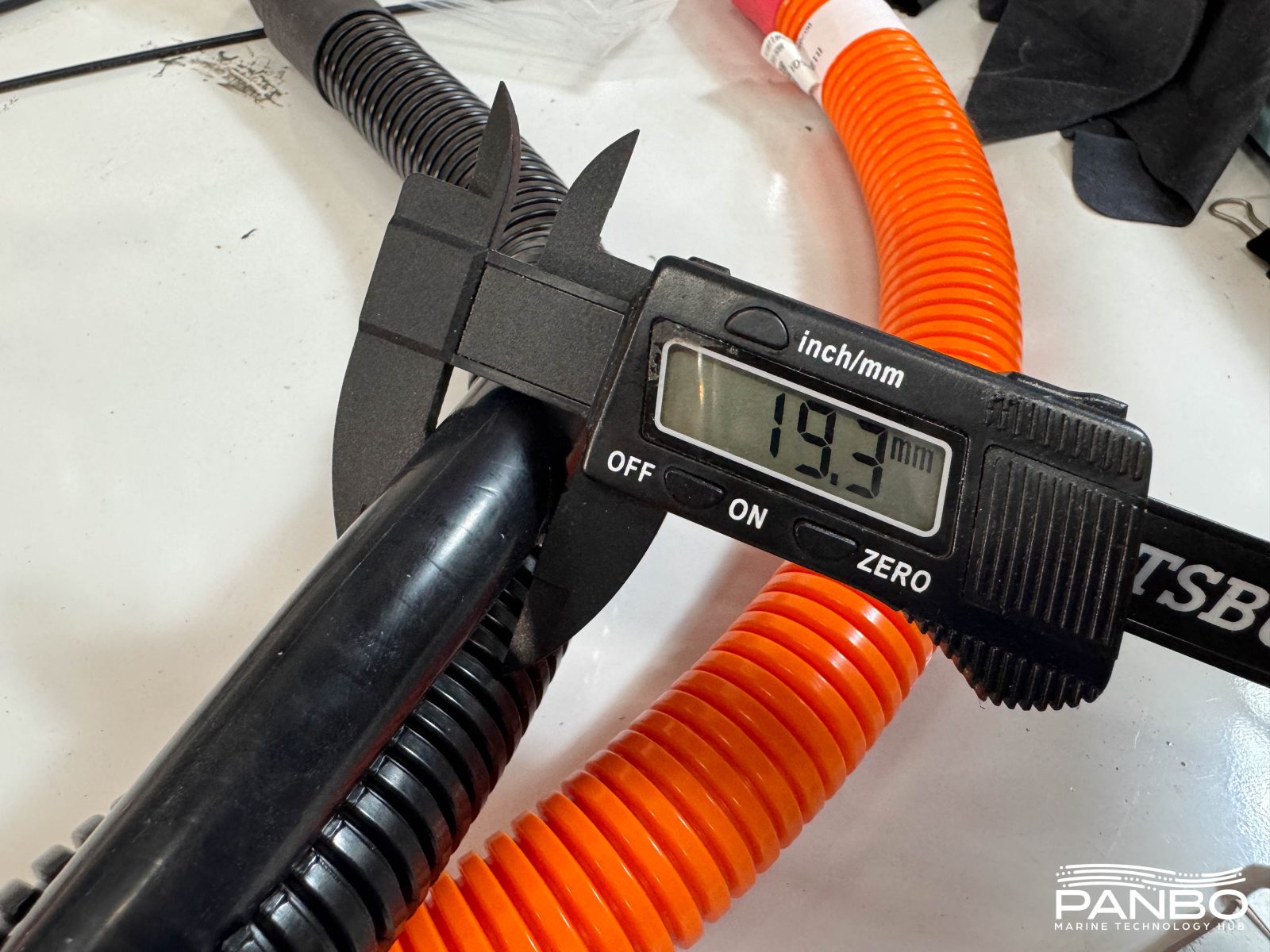
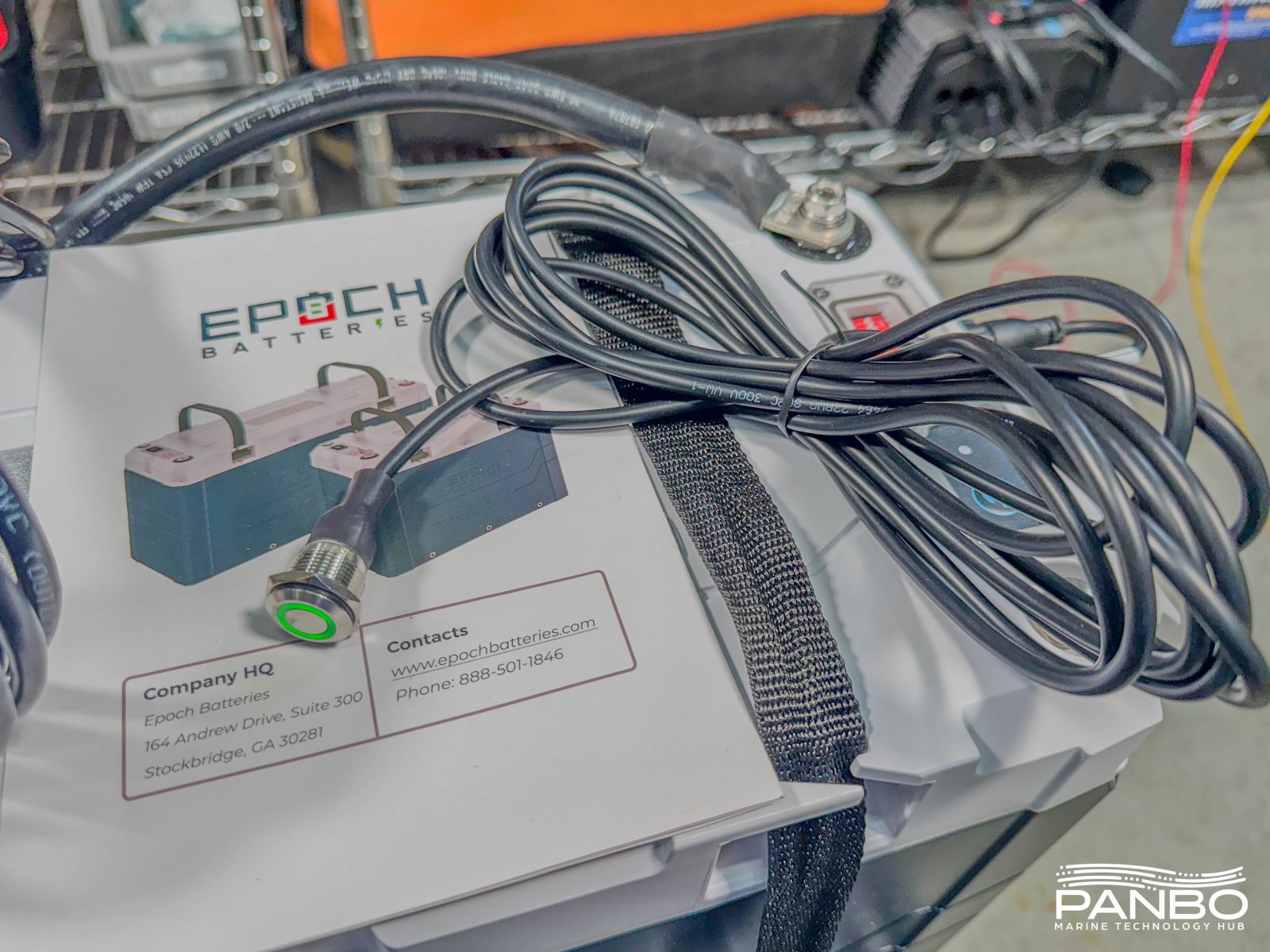

Epoch still includes the 10-segment LED gauge with alarm, but that now comes as part of the wiring harness that also enables external CAN communications. Additionally, they now include an external power switch with a ring that glows when the battery is powered on. The 460ah battery also includes a roughly half-meter cable with eye terminals on one end and an Anderson Powerpole connector on the other end. There’s no mention of this cable in the literature or an intended purpose.
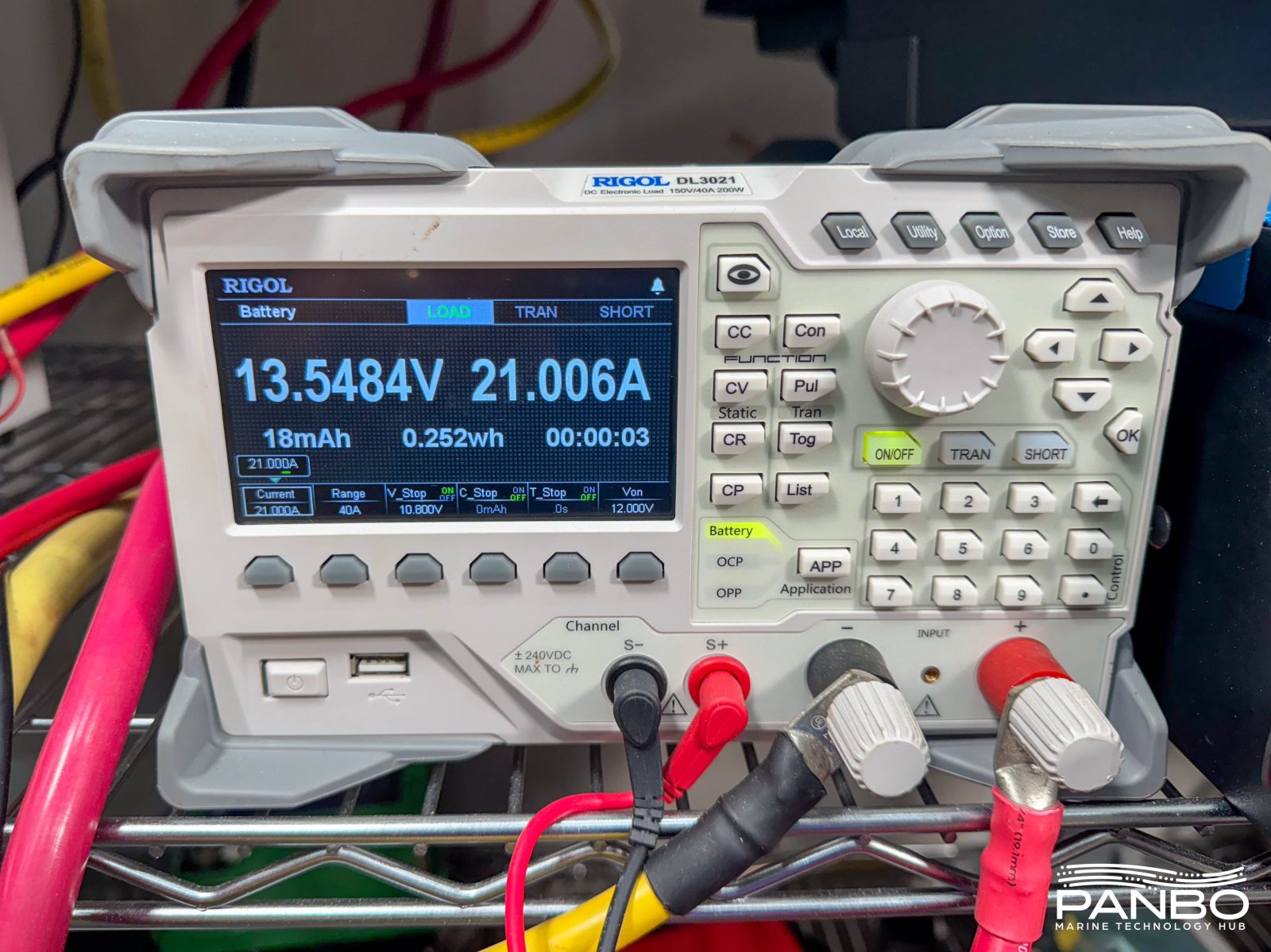
My plan is to put the battery through a thorough set of electrical tests including load tests, high current draw tests, and if I can figure out how to supply enough power, high charge rate testing. Then I’ll dig thoroughly into the Victron connectivity and integration. But, capacity testing may be a little bit of a challenge. My trusty Rigol DL3021 load tester maxes out at 21 amps of load at 13.5 volts. BCI ‘s 20 hour capacity test calls for placing 1/20th of the battery’s rated capacity on it for 20 hours and measuring the total output. Unfortunately, 1/20th of 460 is 23 amps and just in excess of the DL3021’s maximum load. I’m going to run the early tests at 21 amps. I might also try to place a fixed two amp load on the battery to get to a toal of 23 amps of load.
After all the functional testing is done, I’ll tear down the battery. Based on what I saw in my teardown of their 100 amp-hour batteries, I’m pretty excited to see what’s under the cover of this battery. Based on its weight and dense feeling, I don’t expect to find nearly as much unused space as I did with the smaller batteries.
Stay tuned for updates. Lastly, if there’s anything specific you’d like to see tested or explored, let me know in the comments below.













compared with Discover Blue, their Epoch 100 is a rats-nest keeping consistent with the much smaller skillset of ‘slave-karma concomitant price-point’. As usual though, thanks to the “Bens” for keeping watch
This looks pretty cool. Unclear what would make this meet ABYC E-13 standards, but looks like a step in the right direction. From the looks of things I could put four of these and a separate AGM for starting in the space I have 4x GC8 batteries, and still be underweight. 1840 amp hours for 388lbs vs 440 amp hours useable (50% DoD) for 594 lbs seems like a justifiable upgrade 🙂
Sven,
I think the hardware requirements to mmet and exceed for E-13 are all present in these batteries. But, at least as of right now, it looks to me like the manual doesn’t include enough information about reccomended charge settings to meet those requirements.
-Ben S.
Thanks Ben, that was my initial take as well but haven’t had the time to run through the checklist of things in E-13. I’m not sure why they wouldn’t add the relevant sections to their manual if they want to market this as marine. Also not sure why someone would be breaking out multiple boat bucks to install batteries that don’t meet E-13, given possible/probably insurance rulings in that area.
Looking forward to the full review!
I just spoke with Epoch and they have an updated manual on their website at https://cdn.shopify.com/s/files/1/0251/0484/2798/files/EB_B12300_B12460_Manual.pdf?v=1696992573. I just quickly perused the manual and it does look quite a bit better, but I’m not sure it includes enough information to meet E-13. As part of the full review of the battery, I’ll do a more careful analysis of the manual and E-13.
-Ben S.
Thanks for that Ben. It also looks like they updated the datasheet so that has some of the other checkboxes filled like listing fire extinguishing medium, etc…
I don’t have the full standard, but this looks very close and potentially a great value. Waiting on your analysis with great interest.
Is the batterie compliant with ABYC E-13 (section 13.5.4) when it comes to testing requirments?
Ben,
As a boater who had his boat about 30mi from you during the hurricane Ian I’m curious to learn if you have found a replacement for your BIG boat yet.
I sustained damage to our boat in Port LaBelle but nowhere near what you suffered.
Thanks for what you do.
Charles,
We’re working on another bigger boat. We plan to go smaller this time around but certainly bigger than our current 22-foot center console.
-Ben S.
Really looking forward to your test results bc I have a hard time recommending drop in Li batteries don’t meet E13 requirement for pre shutdown warning. And people balk at the much higher cost of those few that do. So, I’m hoping that this is a feature that you can investigate. Thx again for all that you do!!
As I understand the ABYC pre shutdown warning is NOT a requirement. More a recommondation?
My understanding too. More info here: https://panbo.com/abyc-ratifies-e-13-their-first-lithium-battery-standard/
When I saw this I quickly went to roypow (who build the batteries for epoch) and said..oooh great when can we get roypow versions in Australia (as epoch doesn’t sell in Australia) ..epoch advised that epoch holds the patent on this design and the software for the victron interfacing. Whilst roypow still build it for them in their china plant (also why their is no labling on the cable ) they won’t have a roypow version unless some Licensing deal is agreed upon I assume. Shame j really really want to try one of these bad boys. And their introduction price was very attractive. You don’t fancy sending it down to Australia for some Australian conditions testing by any chance Ben ;)?
Moose
Slightly off-topic, but maybe worth mentioning that RoyPow showed a very complete 48v marine energy storage system (ESS) at METS, and seems to have global distribution:
https://www.roypowtech.com/marine-ess/
Moose, are you seeing good results from their gear?
Also, I see more and more batteries (and regulators) claiming Victron compatibility, and I gather that Victron has made the interfacing fairly easy at their end. I look forward to learning more about that from Ben S.
we have had a big push down here for the 48v conversion scene. uptake is a bit slow and limited.. partially by cost, and people with substantual investments dont want to go messing with warranties, though we are undertaking next winter “june/july” a generator delete with a 48v system, in contention is Roypow. From the Industry scuttlebutt we hear there has been a few installs done in Sydney and Brisbane of the Roypow 48v system, however i havnt spoken to any of the techs or installers who have done this yet.
Roypow has seemingly been on the up and up with their pressence at every major alternitive power expo in pretty much all markets it seems, we recently had a green energy expo here with Roypow exhibiting home storage and prime mover truck AC systems.
Marine here has im sure been much like in the US with a bit of a cloud still over insurance liabilities with lithium, though in the “IDAF” client base, Lithium has been HUUUGEE.
We have done a dozen??? Roypow trolling motor lithium set ups and a few House power lithium set ups, the lack of direct victron interfacing has been…..noticed but in all fairness we can get by with a smart shun, cerbo, for a lot. we just in the last week completed our first 2 Ve Konnect Digital yacht victron interfacing into existing NMEA set ups, so…. maybe the Victron interfacing isnt being missed as much …yet
Thanks, Moose, but have to admit that I used Google to decipher “IDAF” and still don’t understand why there isn’t a “G” in the middle 😉
family friendly website 😛
I did a quick scan of the RoyPow marine-ess web site. Interesting if all is real, but missing technical detail. For example, a 48 volt “intelligent” alternator with a CAN Bus i/f? And no mention of it’s internal/external regulation, nor programmability. But somehow it maintains your batteries perfectly?
Communication is i think their big issue atm, Im sure Epoch have been working through that too with early reviews etc complaining of the manual and tech data. and whilst the Roypow batteries have been rather good for us. the paper work and in particular the marketing material is needing a lot of work for western markets.
I’m still working my way through a review of the battery. So far, everything is looking pretty good, though I may be seeing a small alarming issue with the Victron integration. However, when I opened the battery I was very surprised, and equally pleased, to see a Class T fuse built right into the battery. Here’s a quick video I put together showing the fuse and why I think it’s a big deal.
https://youtu.be/pUMCf9qKI5A
Ben, what issues are you having with the Victron comms? I was able to get two batteries to daisy chain properly and show up on the Cerbo. I made a video covering that. You may need another cable. https://youtu.be/pIXSKpi-TRo?si=ZsibhTZRUd8opDVE
Looking good, Allen. Also appreciate your first Epoch 460 / Victron test video: https://youtu.be/wD2QCpnBNY0?si=6uY1ymYY546Q05vV
Fuse replacement. I just ordered 2 https://www.aliexpress.us/item/3256803432727687.html?spm=a2g0o.order_list.order_list_main.4.21ef1802ZAASSe&gatewayAdapt=glo2usa
Do you happen to know if the CFriend fuse is physically interchangable with existing Class-T fuses? It looks like it is, but without direct measurements.. Btw, the CFriend spec sheet shows about 45,000 amps interruption rating.
When I get them in ill compare them and report back.
that fuse is a big question – everything from faux ‘utility standards’ to legal firewall, and is the cinder block bldg & 100 meter gravel perimeter an option? Cell “package” size (whether professional utility ops or consumer) is the whole safety game, why four lithium 100’s with user managed external fusing are an order of magnitude more reliable/safer than one 400. Seems more “paper or plastic” at the lithium cell walmart.
Huh? Can you try and unpack some of what you said? What is a question about the fuse? What does a fuse have to do with a “legal firewall?”
-Ben S.
looks like it might be AI spam bot. seen them before on other forums. they talk gibberish that is barely decipherable but continue posting in the same conversation randomly.
CFriend website https://en.cfriend-electric.com/
USA judges/juries are the teeth, lawyers the muscle – nothing but gums in China. USA insurance genius specify ‘fuses’ for HARMS to family, to boat, to neighbor’s boat, to you (and your back throwing anything around above the 50 lb threshold). Chinese tyrants dictate ‘fuses’ for STUFF – people or manuals for them don’t matter. Here, engineers work for people – its the LAW.
This battery at best is an audition for “Hurt Locker 2”, and chinese ‘patents’ are internationally commonly regarded as legal deception, and with the mtbf of that fuse, would be shredded in court – virtually considered intentional fire & attendant harms. This is not safe for consumers, or even professional utility practice – where technicians’ safety is paramount.
Here, western science of insuring people against harms meets crass atheistic materialism. Run, not walk from this bunch. You put this on your boat, your neighbor can sue and will win – not much in the savings, but educational to meet real professional safety engineers as hired guns for kids and puppy dogs. Ask epoch about the mines – care about kids? huh
What ????
Well hello “adventurer”!
It’s been some time since we had an angry crackpot on Panbo and it’s kind of exciting. But please take care, as you’re quite close to violating our fairly permissive commenting policy:
https://panbo.com/panbo-commenting-tips-edit-policy/
Also, I think that the nasty child labor in mines issue that you seem to reference mostly involves cobalt, which is not in lithium iron phosphate batteries like the one Ben Stein is testing. So you might want to apologize to Epoch for that smear.
And while I agree that a 97-pound battery is fricking heavy, I wonder if you understand that many boats are lugging 8D batteries that weigh even more though they have much less real world capacity and probably much shorter working lifetimes?
Overall, I think you’re failing to demonize Epoch and LFP batteries in general. Or whatever you mean to put down, as that’s unclear. Try more facts and a lot less elliptical language.
Ben S,
Keep up the great work. Your insights are much appreciated. (“legal firewalls” not withstanding)
I have emailed EPOCH and asked what 12V batteries are certified to comply with ABYC E-13 when it comes to battery or cell certification. No answer!
I then called them and got a jada, jada, answer. Really frustrating.
My conclusion is they are hiding the fact that they do not have a battery that meets the ABYC E-13 requirement’s for certification.
Would be nice if you could get some clarification.
A battery cannot meet E-13 and I don’t know that any battery will be “certified” to E-13. It just needs to have the traits to make an installation that meets E-13 – since many of the requirements to meet E-13 are installation specific rather than just related to the battery. This seems to have all the physical characteristics and now it seems to me it’s a matter of all the documentation requirements being met. If documentation is met then it’s down to the install meeting the full requirements for E-13, which are still a bit vague in some areas. It’s also worth mentioning E-13 can, and likely will change as time goes on.
Not sure what you mean?
ABYC 13.5.4 Batteries or cells shall meet the testing requirements of at least one of the following standards.
A good example is Kilovault batteries.
https://kilovault.com/wp-content/uploads/2022/11/certification_UL1973_HLX2400_3600.pdf
Having said that I think is an excellent battery. But it does not help if my insurance company wants a installation that is compliant with E-13.
My point is that a battery itself cannot meet E-13, there needs to be a full installation to make it meet the standard. Also ABYC doesn’t certify batteries or other equipment, they do certify people (afaik). So an ABYC certified battery doesn’t exist to my knowledge. My boat manufacturer certified that the whole thing met standards at date of manufacture.
For most of us, what will matter is what the surveyor writes down and the insurance company requires. While it doesn’t seem like insurance is quite going the “ban lithium” route I wouldn’t be surprised to see surveyor inspection of system as a requirement for coverage. Sometimes surveyor recommendations become insurer requirements for coverage.
But what I think you are after is the same as what I am: will this battery and its documentation, properly installed meet ABYC E-13 as it stands now?
Also while many parts of the E-13 are optional and recommended,
Here a short list how I understand ABYC E-13
Battery:
Any battery chemistry in the Lithium-Ion group can be used.
Battery OR individual cells shall meet the testing requirements of at least one of following standards.
IEC 62133, IEC62619, iEC62620, SAE J2929, UL1642, UL1973, UL2054
Battery should have an extensive manual that describes dangers, installation and safe voltages etc.
Battery should have a BMS and it should be installed in a way that it is protected from water during normal vessel operation.
Charging sources should be programmed so to meet the profile of the battery/cell manufacturer.
Battery shall be installed so it meets the recommended temps, vibration, restraint criteria specified by the battery manufacturer.
Conductors should be protected by a fuse with sufficient AIC.
Battery switch shall be easily accessible and installed as close to the battery as possible.
Paralleling, serial connections, fire protection acc. to the battery manufacturers recommendations.
Most of above is common sense in my opinion.
What is “new” is the requirement for certification of battery or cells and that the manufacturer attach a proper manual.
I’ll get confirmation from Epoch but I believe we will find out the cells are certified though not the entire battery. That’s sufficient to meet E-13’s certification requirement. I think the battery will do well with the rest of E-13 (BMS, etc) and the mounting scheme will make it easy to mount the batteries in a compliant manner. BUT, currently I don’t believe the documentation is sufficient to meet the manual and specification requirements. This seems like it should be the easiest of the challenges to meet. However, it seems like Epoch has had an easier time developing superior batteries than they have sufficient documentation.
-Ben S.
Thanks for checking this. I think you are right that it might o.k. If the cells are certified. But I guess it would be a requirement that they write that in the manual. If not how should you be able to claim that the cells are certified if a surveyor or insurance company is asking?
Absolutely right, they need to add that info (and several other pieces of information) to the manual and datasheet. Incidentally, right now, the datasheet looks more complete than the manual.
-Ben S.
Hi Ben, No answer from Epoch yet? I think that is really strange. Should not take them several days to answer a simple question.
Alf,
The delay here is all mine. I faild to reach out to them in a timely manner. But, I just talked to Epoch and confirmed the cells are UL listed. Additionally, testing is underway to certify the finished battery as well. Also, I was able to confirm updated documentation is close to ready to publish. It should be up in January and contain all the required information for E-13 compliance.
-Ben S.
Alf, I’ve read in several places that my Victron batteries don’t meet the certification standard – for sure the data sheet and manual don’t list anything but transport standards. I do see that Victron released a “Conformity” statement in 2022 ( https://www.victronenergy.com/upload/documents/Batteries-Li-Ion-2022-07-04.pdf ) but I don’t know whether any of the listed standards apply to E-13 compliance/ Can you comment?
As near as I can tell, my Victron installation conforms to the standard, but this is a question! I also note that Victron has released a major improvement to the manual they supply with their LiFePO4 batteries (vs. the one I got in early 2022).
Hartley
S/V Atsa
The document you attached is Victrons “self declaration” that the batteries meets the listed EU standards. (https://asq.org/quality-resources/ce-marking)
I do not know the significance of the listed EU standards. But I doubt that it makes the batteries compliant.
I think Victron uses Winston cells. It might be that they are UL
Iisted?
Interesting, so according to that data sheet, to parallel them, you connect each batteries studs individually to a busbar post instead of connecting the batteries together first then running a single positive and neg wire from one of the batteries to a busbar.
Right, that’s become best practice for all battery banks, so they each experience equal cable resistance.
Also, all positive cables to busbar should be same length, same for negatives, though can be different than Pos.
More info on cable balancing strategies at end of this entry:
https://panbo.com/gizmos-new-firefly-battery-bank-working-out-the-details/
Very interesting, thank you. I did not know this. I have one of their 300Ah batteries. I probably will add a second early next year in parallel and will wire them like this instead.
Interesting reference to that 2016 post, Ben – the balancing info is timeless, of course, but we sure have come a long way on “House Bank” chemistry, haven’t we?!?
Hartley
We’ve got one of these on order and are looking forward to pairing it up with the Arco Zeus voltage regulator.
Please keep us posted on how that goes. Very interested in your impressions regarding the combo.
Got it up and running over the weekend. My test bench only has a 1/2 HP motor to drive the alternator, but the Zeus app has a nice and easily accessible pullback feature. I set the max output to 18% and the motor no longer bogged down.
The Epoch uses 500 Kb/s to communicate, and the Zeus uses 250 Kb/s, so I put the Epoch on the Cerbo’s BMS.Can port, and the Zeus on the VE.Can port. The Zeus is not fully integrated in the current VenusOS, so I installed the most recent relese candidate and the Zeus appears in the GUI as a power source. Major changes coming to the Victron GUI!
Looking forward to the full review. I see in the comments above that you are finding the documentation could use improvement, too. It’s good to see that they have responded to you that they plan to improve it sometime in January.
Hello all, thank you for this thread. I am about to purchase two Epoch460 batteries and am very interested in being kept informed on compliance and documentation issues. Thank you all for your contributions..
Hi, many of you may already be aware of Will Prowse’s YouTube channel DIY Solar Power, a very knowledgeable source on this type battery chemistry. He has a prolific number of videos testing and disassembled LiFePO4 batteries of all makes. Here is the link of the Epoch 12V 460Ah LiFePO4 Battery review and teardown. https://www.youtube.com/watch?v=GxeVQg-X4Ys&ab_channel=DIYSolarPowerwithWillProwse
Ben Stein’s full Epoch 460 testing here: https://panbo.com/the-ultimate-lifepo4-battery-epochs-460ah-powerhouse/
I am supremely interested to see how this battery works over can.bus specifically in the bms.can port of the victron cerbo. I was reading the owners manual from Epoch’s website and saw that they have dip switches to provide instance numbers for upto 4 batteries and a terminator resistor as well. Any chance you could do a bit of a setup to demonstrate that?
This Epoch 12V 460Ah is the first drop-in battery I have seen which has the features I would want in a marine LFP. I do wish their external communications and BMS were more customizable. I watched your video on the voltage spike issue from the charge FETs suddenly switching off…. They should have a user adjustable 100% SOC threshold, a user adjustable end-of-charge threshold (which is also communicated externally, ideally by both Can bus and by a high/low signal) and an internal charge FET BMS over voltage protection (OVP) fixed at 3.65v. This OVP should be a protection of last resort and in 99.99% of circumstances the alternator’s regulator or shore charger should shut down (in a controlled manor) before any cell get to 3.65v. Also, batteries of this size should either come with active balancing of at least 2 amps or an external port that will give access to the balance leads so that user can plug in an external active balancer for routine maintenance after long storage periods.